Sunday, March 28th 2021

ASUS Launches Single-Fan RTX 3060 12GB Phoenix Graphics Card
ASUS has recently launched their first Ampere Series Phoenix card with the GeForce RTX 3060 Phoenix (PH-RTX3060-12G). The Phoenix features a 2.5 slot design with a single fan and measures just 17.7 x 12.8 x 5.1 cm which makes it the shortest Ampere GPU from ASUS. The card features the NVIDIA standard 1777 MHz boost clock but can be configured with the bundled ASUS software for 1807 MHz. The Phoenix includes three DisplayPort 1.4a connectors and one HDMI 2.1 along with a single 8-pin power connector. The card is now available to purchase from select retailers but official pricing and availability have not been released.
Source:
ASUS
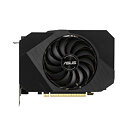
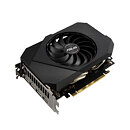
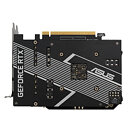
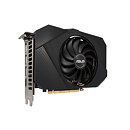
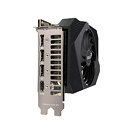
38 Comments on ASUS Launches Single-Fan RTX 3060 12GB Phoenix Graphics Card
The hightest-TDP low-profile cards to date have been 75W, and those were still double-wide. Perhaps a 3050 variant might be under 100W and make a low-profile variant feasible.
For a small card it looks pretty nice imo.
What you are saying imply that both AMD and Nvidia have no idea on how to make GPUs, and ARM/QUALCOMM are light years ahead of them, yet they don't try to bank on that. They are both making SOC for laptop where they have much less constraint, yet we don't see them making chip offering 2060 level of performance even though that would be so easy to do in your opinion.
Look, samsung choosed to get in bed with AMD to get a boost in GPU power rather than boosting Mali, even though RDNA sucks if we follow your reasoning :
Samsung Exynos With AMD RDNA SoC Smashes A14 Bionic in Leaked GPU Benchmark | Tom's Hardware
PS. GPU CU numbers scaling is not so bad like CPU number of cores scaling because operations for GPU are more simplify and is more easily to parallelized to many CU's.
The variety of tasks assigned to the CPU makes it difficult to scale and reduces efficiency, because the CPU also solves a lot of single-threaded tasks.
But my interest in this discussion is on GPU's not CPU's.
And, again, if ARM and Qualcomm could scale their GPUs up to much larger sizes without sacrificing efficiency, why haven't they done so? That would allow them entry into huge and very lucrative markets like consoles, gaming PCs, etc. Of course none of these come close to the sales volumes of smartphones, but smartphones also have near zero margins.
You're assuming they have some kind of magical technology that simply doesn't exist, as you're not taking into account the inherent efficiency that comes from designing for a small maximum size and overall limited layout. Smaller designs will always be more efficient than larger designs. Period. There's nothing saying that any current mobile GPU maker could match AMD or Nvidia at the 150-250W range, except maybe Apple. But given the drastic differences between mobile GPUs in power delivery, size and thus internal interconnects, VRAM interfaces and bus widths, thread/workload allocation, driver complexity, etc., etc., etc., there's no way of knowing until one of them tries.